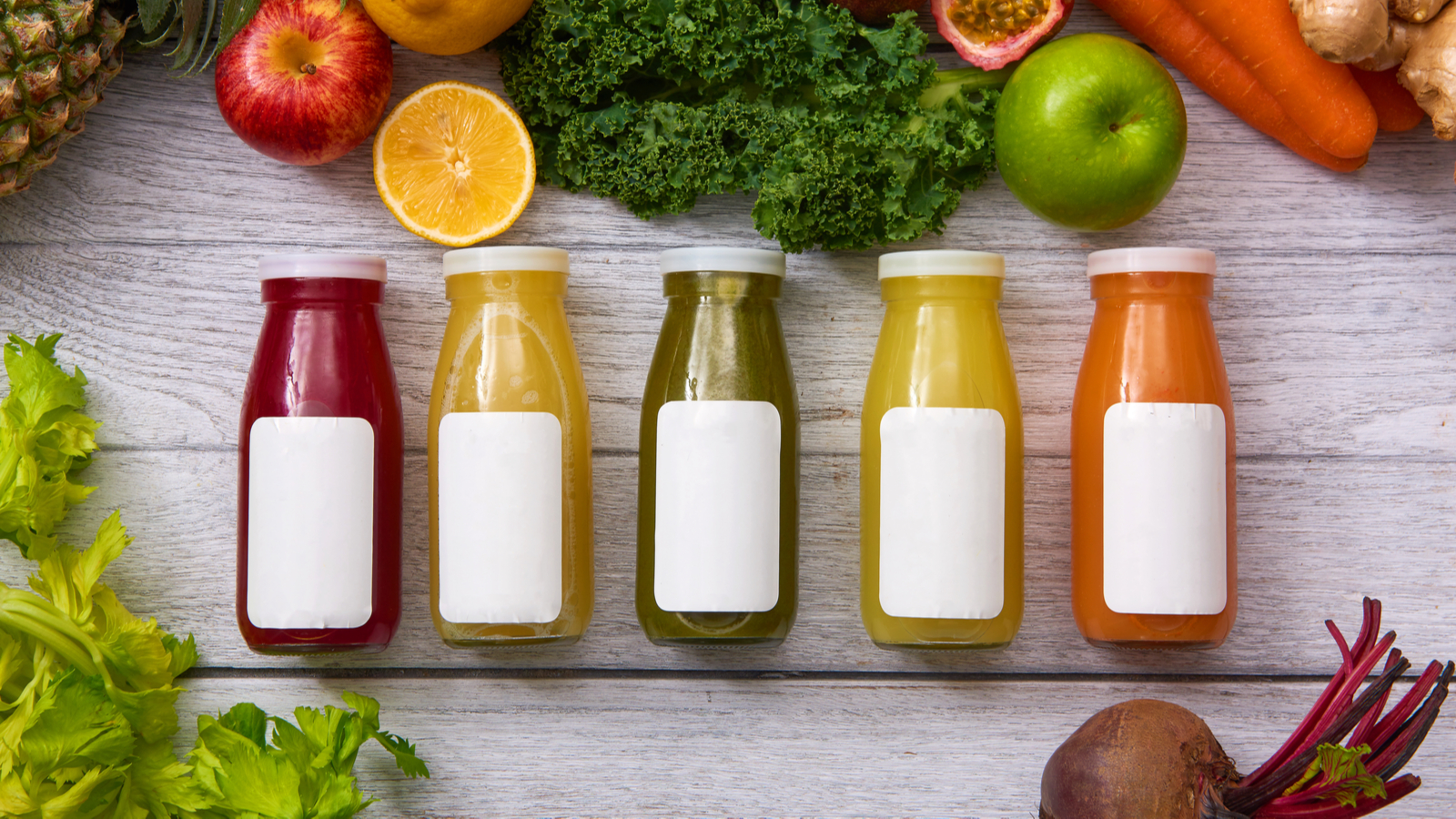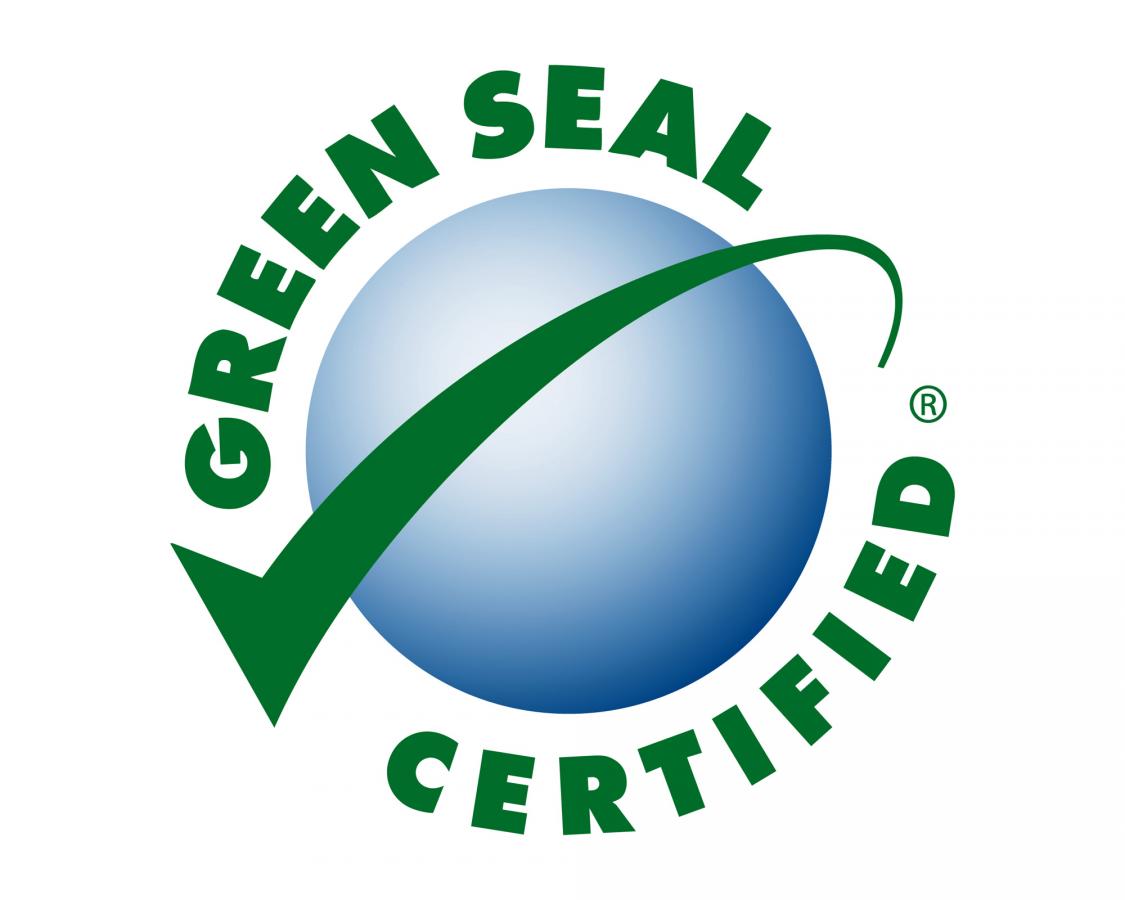

Green Seal

Certified cleaning products that are commonly used in industrial buildings, such as schools.
Purpose
An independent, nonprofit organization that uses science-based testing and a rigorous set of criteria to identify sustainable products.
Applied Standards
Certified cleaning products must demonstrate effective performance, comparable to that of nationally-recognized products in their categories. These products effectively clean common soils and surfaces when used as directed. The performance is measured using industry standard test methods.GS-37 enhances the safety of cleaning products by requiring them to be non-toxic and nonirritating on skin and eyes. Products cannot be formulated with harmful chemicals from a comprehensive list, which includes heavy metals, phthalates, formaldehyde donors, carcinogens, mutagens, reproductive toxins, asthmagens, and ozone depleting compounds. Water quality is protected by setting limits on phosphorus content (to prevent eutrophication), and environmental toxicity and bioaccumulation (to prevent harmful chemicals accumulating in the waterways). The content of volatile organic compounds (VOCs) is limited in order to prevent ground level ozone air pollution and to protect the health of users. The standard also sets requirements for products that contain microorganisms and enzymes, addressing concerns about biosafety, purity, and genetically modified microorganisms. Most certified cleaning products are sold in concentrated or ultra-concentrated form*. This requirement reduces the volume of product sold, thereby minimizing packaging and transportation requirements, which leads to fewer trucks on the road, savings in fuel, and reductions in greenhouse gas emissions. Less packaging saves raw materials and reduces the waste stream. Packaging from cleaning products can contribute significantly to the volume of solid waste, depletion of non-renewable resources, and water and air pollution. The certified cleaners primary package must contain at least 20% less material than an equivalent package; be recyclable and contain 25% post-consumer material, or be a refillable package with an effective take-back program. Harmful compounds, such as phthalates, bisphenol A, and chlorinated packaging material must not be added intentionally. Specific training or training materials on the proper use of the product must be offered. Both product labeling and training materials must contain clear instructions for use, dilution, refilling, disposal, recycling, and appropriate precautions and recommendations for the use of personal protective equipment. The product label shall include English and another language, or English and a graphical representation or icons." There are different standards for glass cleaners, all-purpose cleaners, washroom cleaners, degreasers, laundry and related products, oven cleaners, hand dish soaps, and pH. "If a concentrated product complies with all other elements in this standard, the pH may exceed the limits in 4.2.2, provided the following conditions are met: the manufacturer can demonstrate that the product is designed for use only in a closed dilution-controlled dispensing system; the system prevents backflow (see, e.g., American Society of Sanitary Engineering standard 1055B) and is designed to minimize waste and cross-contamination; the pH at the most concentrated use dilution is within the acceptable range of 2 to 11.5; the primary packaging is designed to minimize the potential for human exposures or environmental releases (e.g., through a drop test); and the label is not used on the product (or packaging) when it is a concentrate (but may be used in promotional materials). Further, if an ingredient in the concentrate does not meet Safer Choice criteria for acute mammalian toxicity (e.g., via estimation modeling), it may still be acceptable if the company provides experimental data that demonstrate a low concern. Safer Choice encourages the use of energy-saving technologies including the use of concentrates and detergents that work in cold water. In view of the contribution VOCs make to indoor air pollution and associated respiratory concerns, Safer Choice restricts product VOC-content based on the most stringent government criteria
"Safer Choice does not allow products containing chemicals that are included on EPA’s list of pollutants. Labeled products must not exhibit the characteristic of ignitability, as defined at 40 CFR 261.21 (a)(1)), and therefore must have a flash point at or above 60°C (140°F). The flash point shall be determined by a closed-cup method, specifically, ASTM E502, or an equivalent method agreed to by EPA/Safer Choice. Manufacturers of laundry detergents formulated for industrial applications must have provide information on the product’s potential to combust spontaneously, i.e., the temperature at which they would catch fire without an outside source of ignition. A cleaning system, such as a laundry system, is not eligible for recognition unless every component meets the Safer Choice Criteria. The Safer Choice label may be used to indicate recognition for the cleaning system, but not on individual components in the system unless they have
independent, end-use applications.... Only ingredients that are non-irritating to skin and eyes, as demonstrated by testing, clinical studies or consumer experience, will be acceptable. At a minimum, a product or its ingredients must not be categorized as an irritant under EPA Office of Pesticide Program regulations (i.e., must not require a precautionary
statement) or GHS criteria. To further minimize the potential for dermal, eye or mucous membrane irritation, product pH must be greater than or equal to (>) 4 and less than or equal to (<) 9.5; products with a pH outside this range may be considered for recognition if in vivo testing (or scientifically valid non-animal testing) demonstrates they are non-irritating, or if they are known to be non-irritating based on their physical-chemical properties (e.g., buffering capacity). No ingredients classified under GHS as skin or respiratory sensitizers are permitted in labeled products. The labeling of FDA food allergens (e.g., peanut, soy, dairy) must follow the requirements in the Food Allergen Labeling and Consumer Protection Act of 2004. Whole product testing may also be used to address concerns for sensitization potential (see test methods listed in Master Criteria). Where an ingredient may be dermally absorbed, the applicant must provide data, for example, repeated dose toxicity testing via the dermal route of exposure, on potential effects; these data must indicate that the ingredient presents a low hazard concern. Chemicals that are candidates for endocrine screening will be part of the review. Chemicals found to interact with or perturb the endocrine system, if associated with reproductive, developmental, carcinogenic, systemic, hormonal or other effects, will not be allowed. Color additives, in any product type, must meet both FDA requirements and Safer Choice Criteria for health and environmental safety. Any candidate colorant must appear on the FDA list for use in the United States and comply with FDA regulations on appropriate conditions for use (as per 21 CFR Parts 70- 82). If a component appears on one of the following lists of chemicals of potential concern, it will be screened
as described in Section 5.2: the California Proposition 65 list, which includes substances the state lists as
causing cancer, birth defects, or other reproductive harm; the list of substances prioritized for testing for
endocrine disruption by the European Commission; and the list of potential sensitizers published by the
Association of Occupational and Environmental Clinics.The criteria address environmental fate and toxicity as the distinguishing hazard endpoints for surfactants.
Where Safer Choice is aware of concerns for other endpoints, Safer Choice may disallow a chemical
based on the thresholds in its Master Criteria." "Ingredients contained in products that are intended for use in applications that result in their immediate discharge to the environment, so that they bypass sewage treatment or septic systems, must meet the criteria in the Safer Choice Criteria for Environmental Toxicity and Fate for Chemicals in Direct Release Products. Solvents must meet the general requirements in Section 5.2 unless otherwise noted below. Solvents classified as alcohols, esters, ethylene glycol ethers, or propylene glycol ethers must meet the solvent criteria described in detail in the Safer Choice Criteria for Safer Solvents (phase I): the Solvent Screen As a solvent ingredient, d-limonene may only be used in a Safer Choice-recognized product in concentrations
at which the potential oxidation products may be present at 20 millimoles per liter (mmol/L) or less (corresponding to a limonene concentration of 1.36 percent or less) in an overall formulation. Based on the potential to accelerate formation of oxidation products, d-limonene may not be used in combination with oxidizers, like H2O2; and based on its potential toxicity to aquatic organisms, d-limonene may not be used in direct-release products (see Section 5.4).To be consistent with CARB VOC limits, as required by this standard (section 4.2.7.1), and to enable the formulation of specialized industrial and other products, an exception to the solvents criteria will be made for solvents that qualify as VOC-exempt or low-VOC, provided they comply, at a minimum, with the baseline requirements in section 5.2 and are among the safest functional alternatives (see Safer Choice exemption criteria). A chemical that meets the criteria except for potential concerns from inhalation exposures would not be allowed in aerosol-generating products.Chelators must meet the criteria described in detail in the Safer Choice Criteria for Chelating Agents general requirements in Section 5.2. In addition, Safer Choice -recognized products must not contain inorganic phosphates that contribute to the process of eutrophication, nor NTA, a potential carcinogen. Chelators that have molecular weight (MW) above 1000 shall be evaluated under the polymer criteria.Colorants (including pigments and optical brighteners), polymers, certain preservatives (including antioxidants),
and other chemicals referenced in section 5.14 include as part of their functionality the ability to resist degradation and be effective over long periods. They also can be complex molecules and mixtures and often lack measured toxicity data. To identify the safest available chemicals in each class given their functional characteristics, the toxicity thresholds in the Master Criteria will be used to evaluate human health endpoints, and the thresholds in section 5.8.3 will be used for environmental endpoints. Data on these chemicals will be required as per 5.8.3, unless noted otherwise. To be acceptable for labeled products, polymers must have low-concern characteristics.Also, the requirements of this section apply to the low molecular weight components of polymers (typically less than 1,000 Daltons). Safer Choice encourages the use of degradable polymers whenever possible; only those that do not degrade into CMRs or PBTs will be allowed. Special conditions for certain categories of polymer: In addition to the requirements in 5.8.3, polymers that are respirable or water-absorbing must be in solution. Anionic polymers used as chelating agents must meet the requirements in the Safer Choice Criteria for Chelating Agents, except section 5.9, Environmental Toxicity and Fate, which must be addressed as per 5.8.3. Perfluoroalkyl polymers, allowed only in floor finishes, must, at a minimum, be limited to fluorinated carbon-chain lengths of less than eight atoms. Preservatives have biocidal properties and time-sensitive functionality."
"The following types of ingredients will be reviewed based on the general requirements in Section 5.2 or
as noted. Cross-linkers. Solubility enhancers, Hydrotropes, Small amines, Bleaching agents, Plasticizers,
Foam boosters, defoamers and antifoamers, Denaturants, Absorbents and adsorbents, Corrosion inhibitors, Antiredeposition agents, Dispersing agent, Coalescing agent. Whole product testing may be used to address concerns for sensitization potential (see test methods listed in Master Criteria).As a general rule, phosphates are not allowed in Safer Choice products. We make one exception: for oxidant stabilizers, which are needed to prevent premature chemical reactions, because there are no safer
alternatives. Oxidizers are typically purchased containing stabilizers. Safer Choice encourages the development of safer oxidant stabilizers. Until those are available, we will allow use of phosphorus in very small quantities, not to exceed 0.5% in a labeled product."" All chemicals used must be on the ""Safer Chemical Ingredient List."
